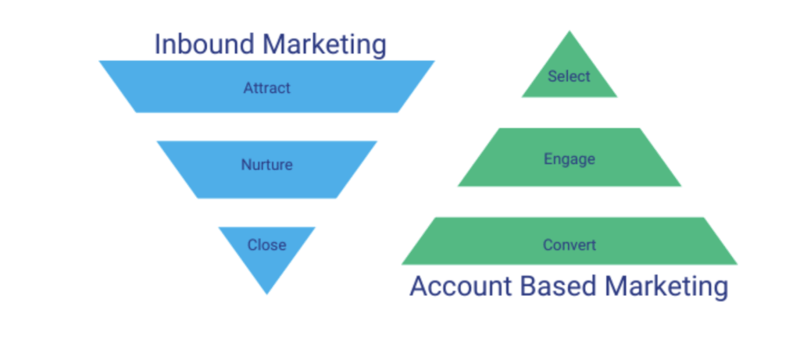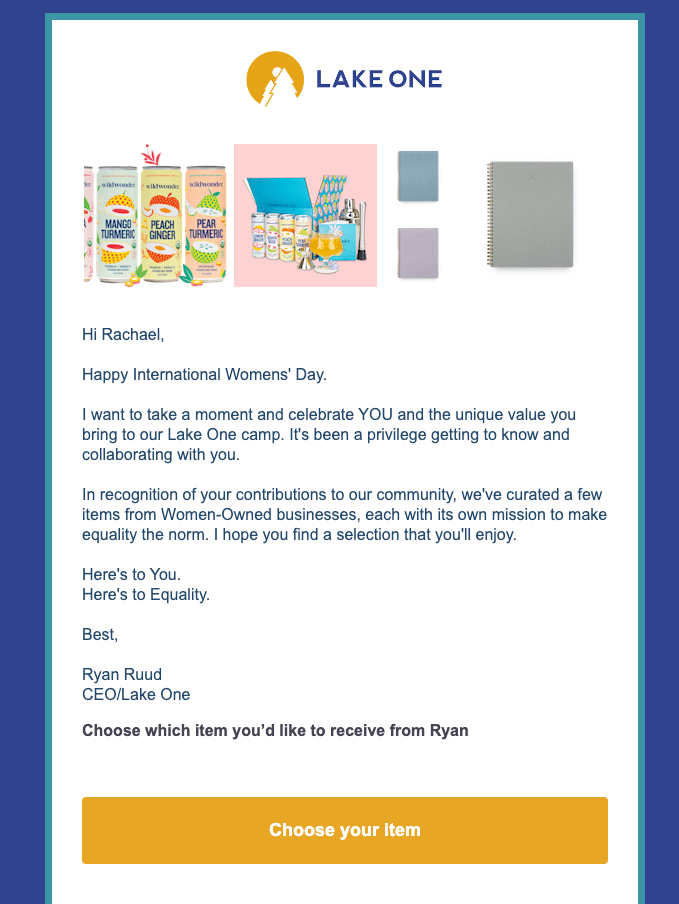Account-based marketing (ABM) aligns the efforts of both marketing and sales to target high-value clients. Both departments work together with a singular focus – to meet the needs of high-value accounts. It’s a way to optimize the marketing process and create more value for all stakeholders (prospects included!).
So, where does business-to-business (B2B) advertising fit into this strategy? If your goal is only to service a handful of major clients, then it would seem to diminish the function of advertising, especially if you have a small group of accounts you’re trying to impact.
B2B advertising plays a significant role in bolstering ABM strategies. With numerous decision-makers involved in the purchase journey, often following non-linear paths, advertising becomes a valuable means to engage the various stakeholders necessary for achieving ABM success. In this blog, we’ll explore how advertising can be tailored to specifically support ABM efforts
For the duration of this post, we’re going to use a fictitious company, Lake Software, to help illustrate along the way.
Lake Software provides a platform solution to enterprise HR teams. Their ICPs are enterprise HR and people leaders looking to tackle employee retention, wellbeing, and attraction issues related to burnout, especially post-COVID workplace changes. Lake Software uses machine learning to better identify and mitigate risk within their client’s employee populations.
Advertising in Inbound vs Account-Based Marketing
Most B2B marketers are leveraging an inbound playbook. Inbound generally focuses on buyer personas and creates content and motions to capture demand from buyer personas looking for solutions to a pain identified in buyer persona research. There is usually higher volume here as you look higher up in the demand cycle to capture interest. Kind of like fishing with a net.
In our hypothetical case, Lake Software runs inbound with a diverse mix of content around employee wellness topics. They use LinkedIn-sponsored content to broadly target their ICP and are also using Google PPC to capture search traffic. This brings in a wide variety of leads, some good, some not so great.
With ABM, your revenue team (aligned sales and marketing) has identified account opportunities that share a common thread and defined the most important roles within those accounts. Your unified team has then worked together to build out an account plan for how you want to engage these accounts (what channels, who, with what message, when, with what expected result, etc.) Like fishing with a spear.
Back to our hypothetical: Lake Software has been hearing from a lot of prospects that they’re sick of using River Software, a survey platform that tells them about a problem with their employees when it’s too late. So Lake Software is working to define a strategy to reach decision-makers at companies that fit their ICP who are using their competitor, River Software. They’re mapping out a 90-day campaign to identify, engage, and (because Lake Software is a high ACV transaction) invite executive decision-makers at companies using their competitor – to an in-person event to learn about a different way to solve their problem.
An important component of both inbound and ABM success is your CRM. Being able to orchestrate your journey and track results is critical to the success of any marketing initiative. Utilizing your opted-in first-party data will also help amp up your optimizations and align your efforts with the journey you defined as a team. Now let’s see how you can align advertising channels, with an ABM journey and orchestrate your campaign with a CRM.

B2B Advertising in Account-Based Marketing: Aligning Channels to an ABM Journey
Native and Display
One of the key strategies to leveraging B2B advertising in account-based marketing is building your funnel. Before you come at us for even mentioning display banners, banners, and native ads can be really cost-effective ways to reach your ideal buyers and start the process of building a funnel as long as you dial in the content and targeting. If you expect someone to convert off seeing a banner ad immediately, then this isn’t the right strategy for you, but combined with your content strategy and as a means of promoting other elements of your strategy, display, and native can give you the reach you need at a low cost, and begin to build an audience to move into the next stage of an ABM journey.
In the case of Lake Software, they’re using intent data with one of their ad providers and matched that to their ICP. They have 1,000 companies using River Software, and 5,000 key contacts at those companies they want to engage. They’ve developed a creative ad set of banners and content for native that is edgy and pushes the pain points they heard in their prospecting asking if their ad viewers are sick of being told about a problem when it’s too late.
LinkedIn and Social Media
With lower cost, display, and native in place, we can turn to more expensive, but higher responsive channels like social media. With remarketing set up to engage the accounts and further refine the traffic that engages on our native and display ads, we can start to share some additional content that helps to further educate and provide insight on intent and opportunities within an account. A mix of testimonials, case studies, a recording a podcast featuring your executives.
At Lake Software they deployed a series of testimonials for those who switched and a cost calculator to find out how much not knowing if you’re employees are at risk is costing your organization.
Multimedia
Depending on budget, and the length of an ABM journey, video and audio are the best ways to break through the noise. Once targeting is dialed in, look to leverage native video, in-app, in-stream, or connected TV to reach hard-to-engage C-level buyers. Once you start looking at multimedia, it’s important to combine it with other media forms to build out the journey for your accounts and optimize for engagement and action.
For Lake Software, the audience at this point is starting to segment down to key decision-makers. A video campaign was created featuring some notable Lake Software customer executives talking about their experience and making a personal invitation to join them at a well-being for the future conference, with a QR code to register These ads were hyper-focused to the C-suite that have hung on through the journey so far.
CRM Orchestration
Email Marketing
In ABM, email marketing is one of the best channels. Statistically speaking, email offers the most promising ROI, with some reports listing a return of as much as 4,400% and a 200% increase in conversion rates.
For Lake Software, all of the registered attendees received a personal 1:1 Email from their assigned sales rep, telling them how excited they were to meet at the event, and asking if they wanted to connect ahead of time to share what their employee well-being goals are for the year ahead.
Direct Mail & Gifting
Gifting and direct mail are great ways to cut through the clutter and have a place throughout your journey. Using advertising can help you whittle down who in your target account list is engaged and might be worthy of sending a gift to and not wasting pressure dollars by casting a wide gifting net.
In the case of Lake Software, all of the attendees received a brand personal well-being kit after the event. As a thank you. The audience was high value and the kit was too. Several of the attendees shared their unboxing on social media and tagged Lake Software on their LinkedIn Page.

We have more on orchestrating ABM with a CRM like HubSpot here.
Drive Success With B2B Advertising in Account-Based Marketing
In the realm of ABM advertising, genuine success is rooted in account planning and ongoing refinement. While the data from platforms, regardless of their size, is valuable, it’s just one piece of the puzzle. The key is to invest the time in crafting high-value interactions for the decision-makers within your chosen accounts, and success will follow.
To learn more about B2B advertising in account-based marketing, reach out to the digital outfitters at Lake One.

